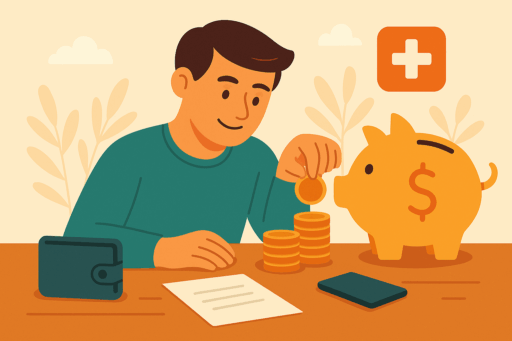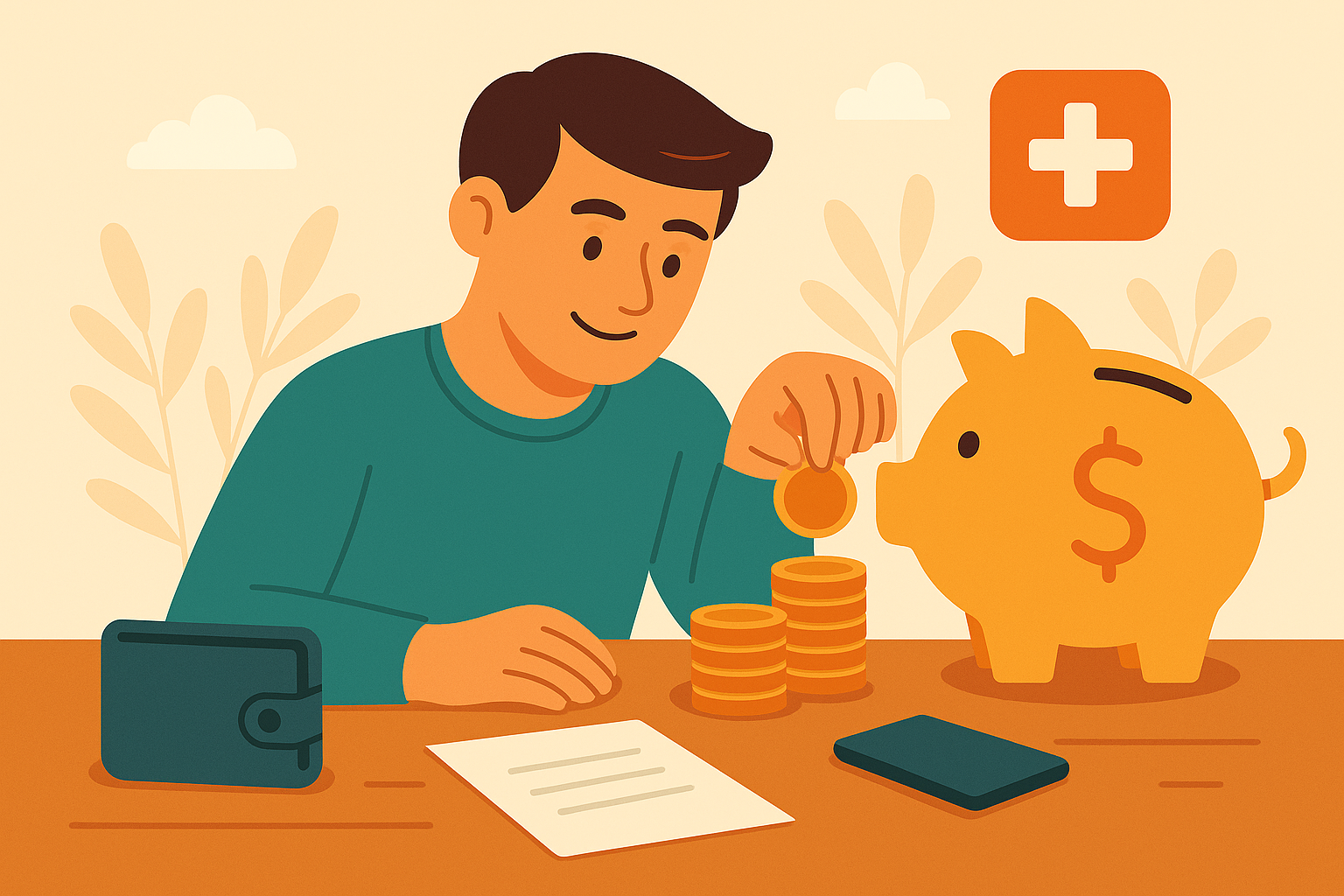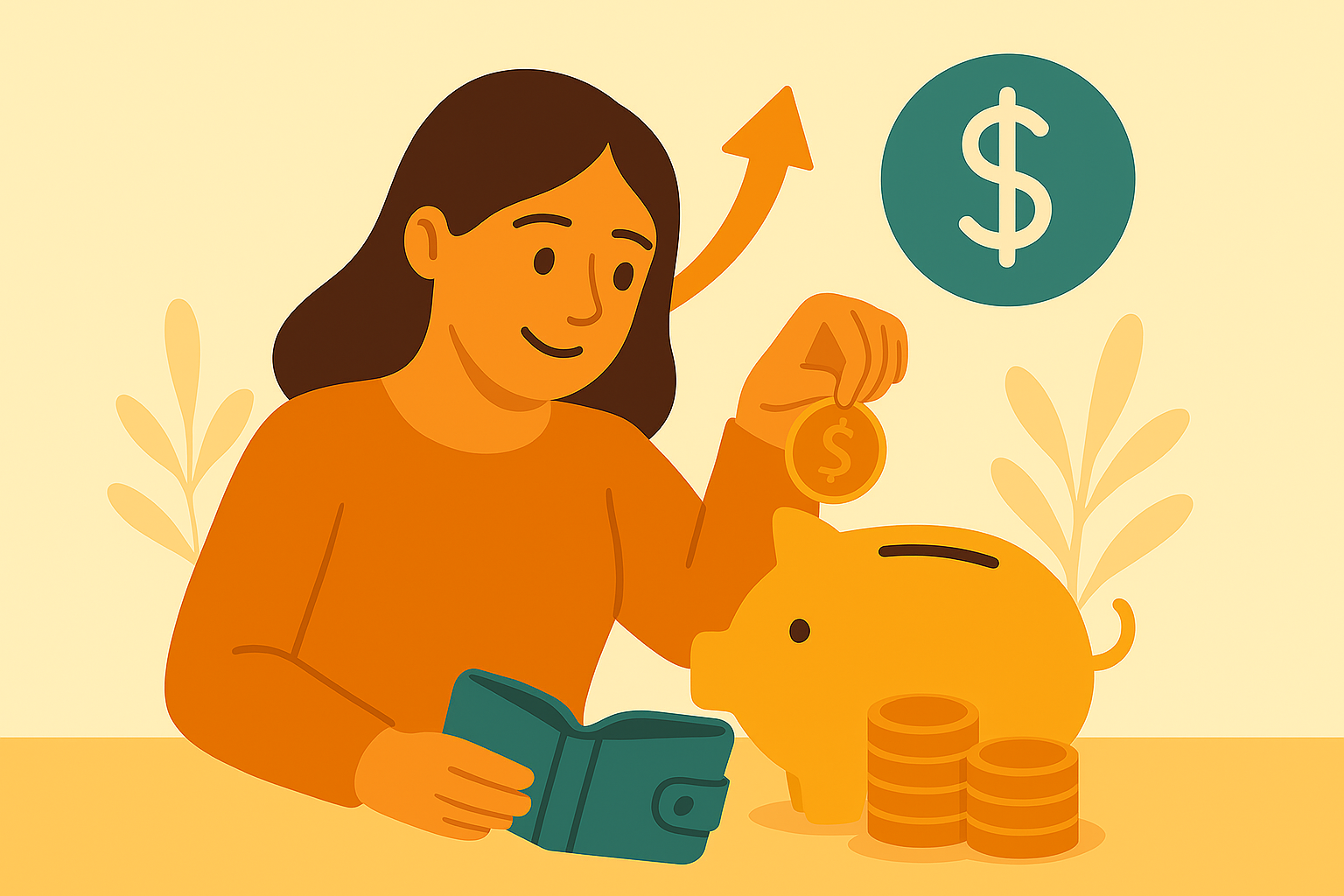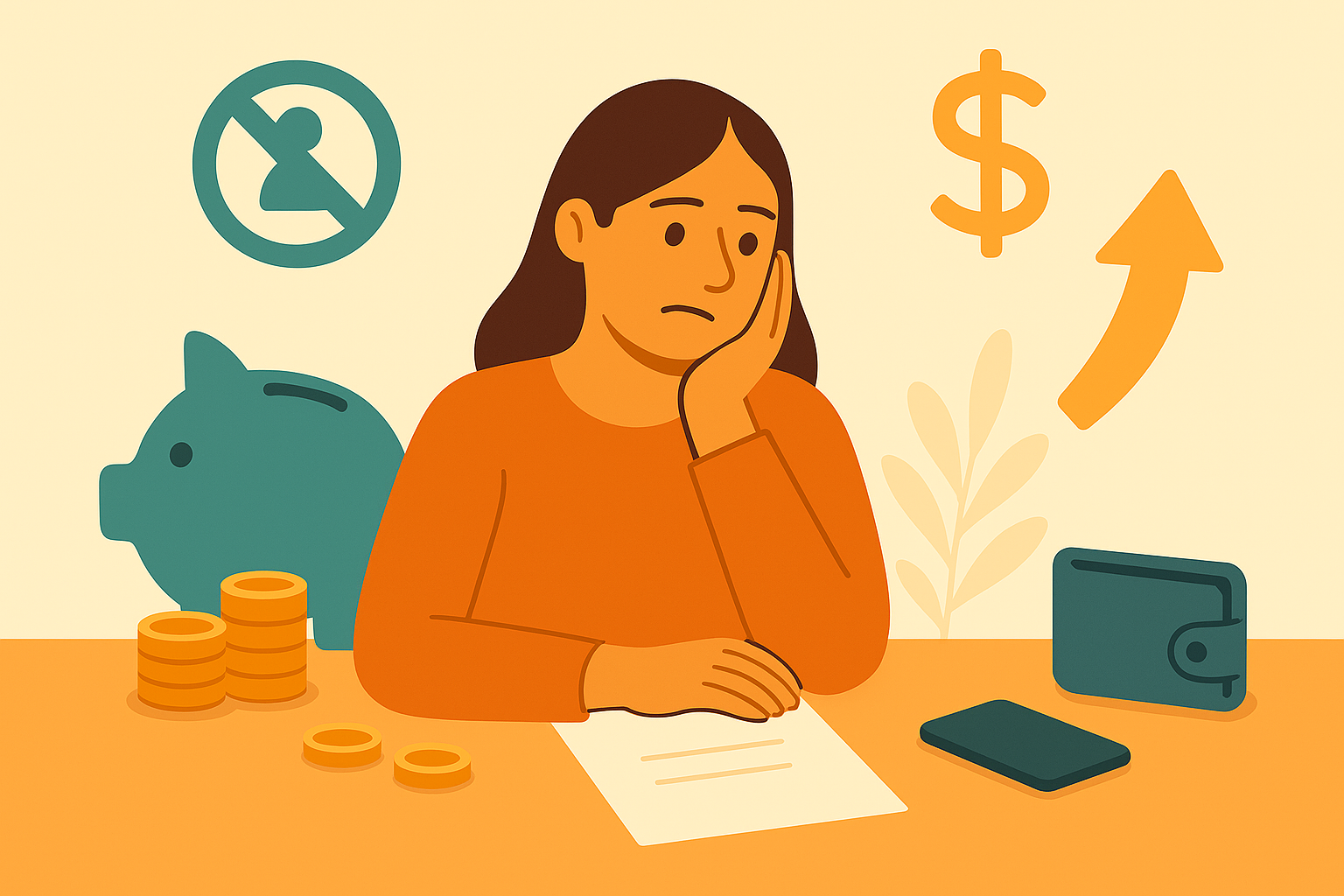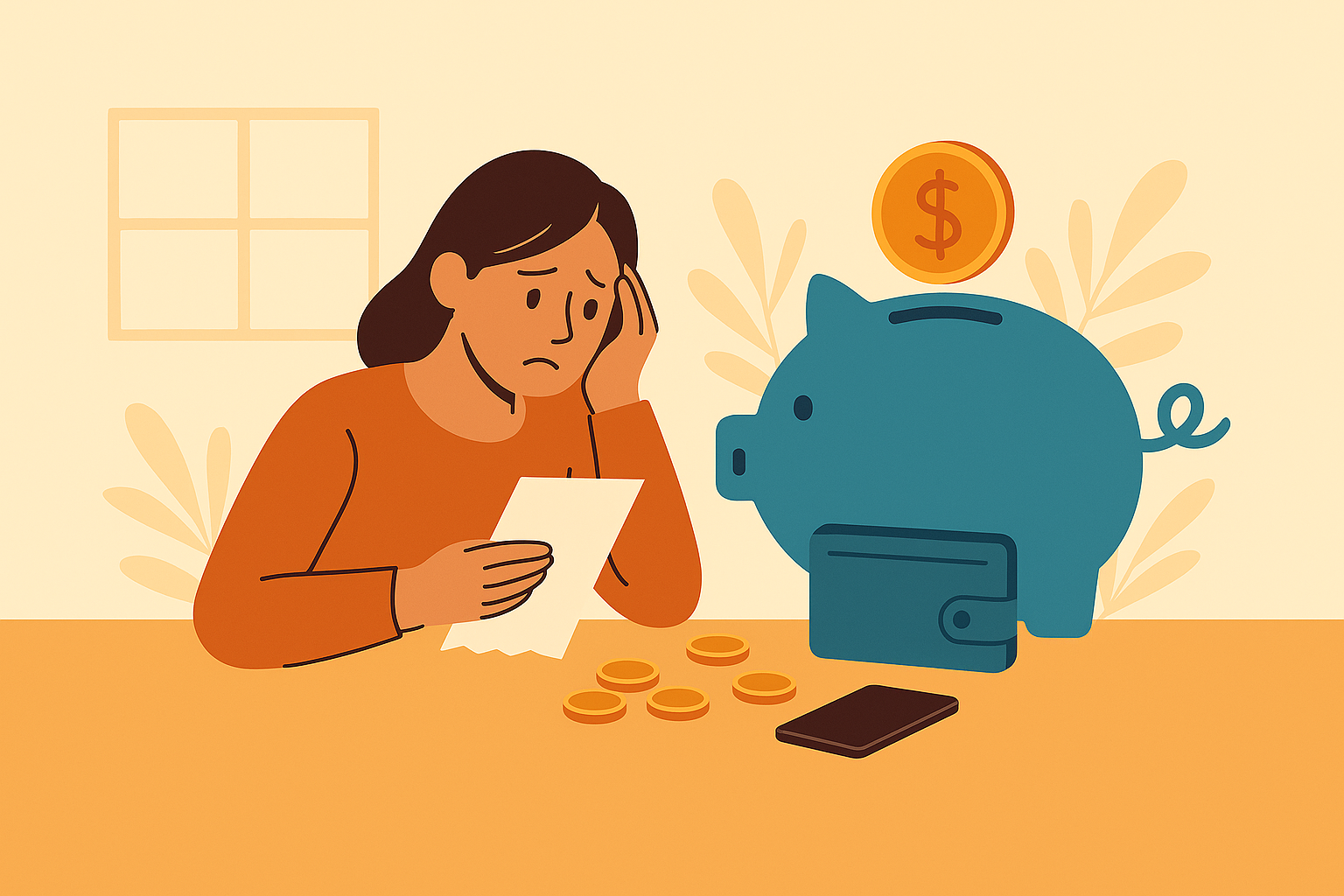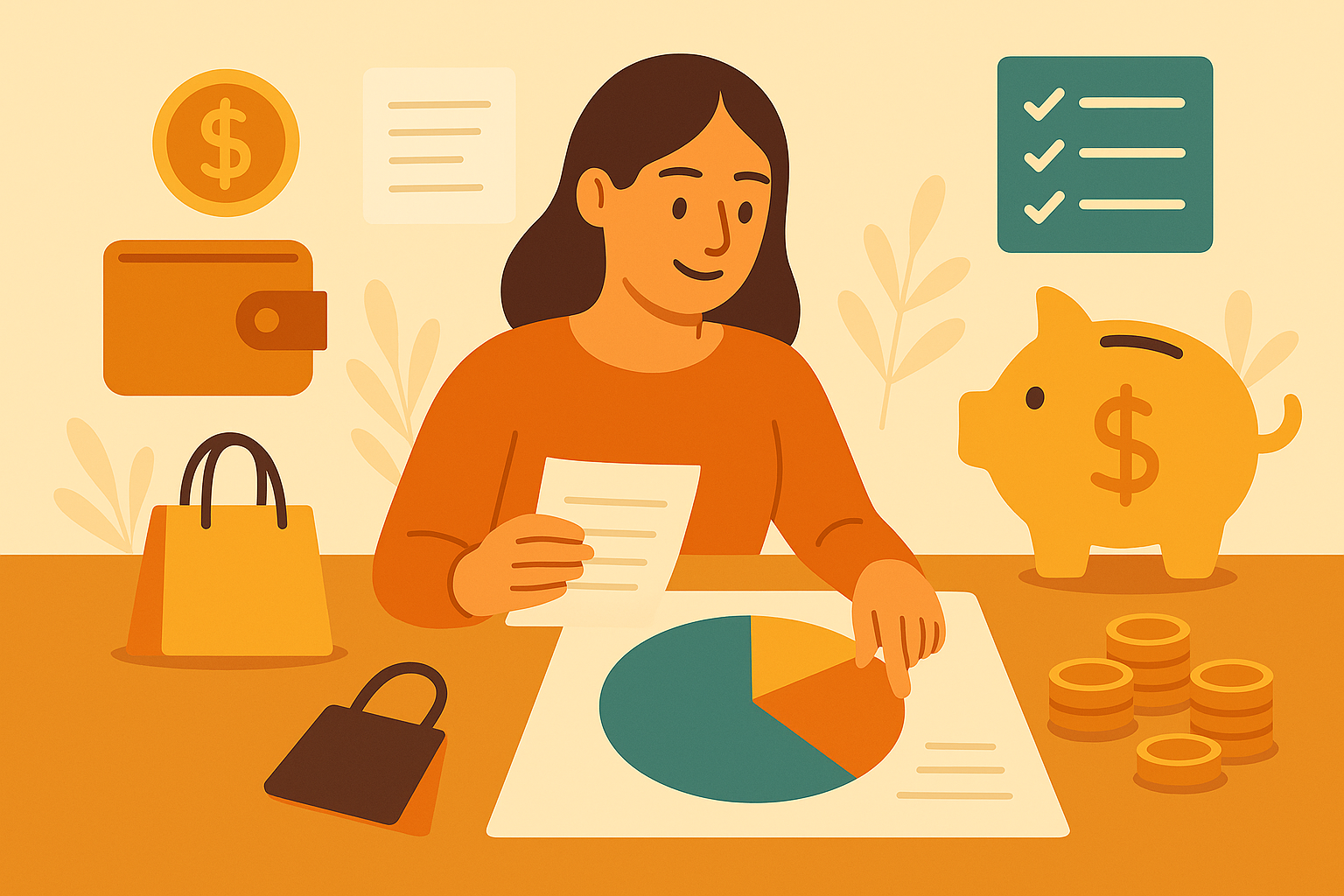Looking for practical ways to build emergency fund? You’re in the right place. Whether you’re starting from zero or trying to reach your savings goal faster, these seven proven ways to build emergency fund will help you get there – even on a tight budget.
So you know you need an emergency fund. You understand why it’s important. You’ve figured out how much you need to save. if you want to know about this, go here.
But now comes the hard part: finding realistic ways to build emergency fund when you’re living paycheck to paycheck.
I get it. When I first started looking for ways to build emergency fund, I stared at my bank account and thought, “How the hell am I supposed to save $1,000 when I barely make it to the end of each month?”
Spoiler alert: I did it. And it didn’t require some massive salary increase or winning the lottery. I found seven proven ways to build emergency fund that actually work for real people with real budgets and real expenses.
Here’s the thing – the best ways to build emergency fund aren’t about one massive action. It’s about multiple small strategies working together. Think of it like filling a bucket. One faucet is slow, but seven faucets? That bucket fills up fast.
Let me show you exactly the ways to build emergency fund that let me save approximately $6,000 in my first year, and how you can use them too.
1: Automate Your Emergency Fund Savings
This is hands down the most important strategy on this list. If you only do one thing, do this.
How it works: The day after your paycheck hits, automatically transfer a set amount to a separate savings account. Not when you “have extra.” Not “if there’s money left over.” Automatically, every single time.
Why this works: You can’t spend money you never see. When the transfer happens automatically, you adjust your spending around what’s left. When it’s manual, you always find a reason why “this week isn’t a good week.”
How to set it up:
Set up automatic transfers through your bank’s app or website. Most banks let you schedule recurring transfers. Pick an amount that feels slightly uncomfortable but not impossible. For me, it was $100 per paycheck when I started.
If you get paid bi-weekly, that’s $200/month or $2,400/year. If that feels like too much, start with $50. That’s still $1,200/year, which is better than the $0 you’re saving now.
Pro tip: Use a separate bank entirely for your emergency fund. I use SoFi for my emergency fund and Chase for my checking. The 1-2 day transfer time creates just enough friction to prevent impulse raids while still being accessible for real emergencies.
Here’s my personal rule: I named my emergency fund account “DO NOT TOUCH – EMERGENCIES ONLY” in all caps. Sounds dramatic, but it genuinely made me think twice before transferring money out for non-emergencies.
2: Cut the Subscriptions You Forgot You Had
Confession time: I was paying for three streaming services I hadn’t used in months, a gym membership I visited twice (both in January, naturally), and some random app subscription I couldn’t even remember signing up for.
Total monthly waste? $49.
The subscription audit:
Pull up your bank and credit card statements from the last two months. Go line by line and write down every single recurring charge. You’ll be shocked at what you find.
Cancel anything you haven’t used in the past month. Not “might use someday.” Actually used. Be ruthless here.
For subscriptions you do use, ask yourself: “Would I buy this again today if I didn’t already have it?” If the answer is no, cancel it.
My actual results:
- Netflix: Keeping ($17.99)
- Hulu: Keeping ($9.99)
- Disney+: Cancelled – haven’t watched in 3 months ($10.99)
- Spotify: Keeping ($11.99)
- Planet Fitness: Cancelled – went twice this year ($15)
- Headspace: Cancelled – used the free YouTube meditations instead ($12.99)
- That recipe app I forgot about: Cancelled ($9.99)
Total saved: $48.97/month = $588/year
I immediately set up an automatic transfer for $50/month to my emergency fund. Money I was already spending, just redirected to something that actually matters.
3: The Spare Change Method for Your Emergency Fund
This one feels almost too easy, but it adds up faster than you’d think.
There are apps like Qapital, Digit, or even some banks’ built-in round-up features that automatically round up your purchases to the nearest dollar and save the difference.
Buy coffee for $4.50? It rounds to $5.00 and saves $0.50.
Buy groceries for $67.23? It rounds to $68.00 and saves $0.77.
Why this works: You literally don’t notice it. Your brain sees $5 for coffee, not $4.50, so you’re not making any conscious sacrifice. But those tiny amounts add up.
My results: After three months of using round-ups, I had saved $147 without even thinking about it. That’s almost $600/year in savings I didn’t have to actively think about.
The manual version: If you don’t want to use an app, do it yourself weekly. Check your spending, round everything up, and transfer the difference to savings every Sunday. Takes about 10 minutes.
4: Sell the Stuff You Don’t Use to Fund Your Emergency Fund
This is the quickest way to jump-start your emergency fund. You probably have hundreds of dollars worth of stuff sitting around your house that you never use.
I’m talking about:
- Old textbooks
- Clothes that don’t fit or you never wear
- Kitchen gadgets you bought and used once
- Electronics you upgraded from
- Furniture you’ve been meaning to get rid of
- Video games, DVDs, books you’ll never read again
Where to sell:
- Facebook Marketplace (my favorite – no shipping hassle)
- Poshmark or Depop for clothes
- OfferUp or Craigslist for furniture and local stuff
My first selling weekend: I spent one Saturday gathering stuff I didn’t use and listing it on Facebook Marketplace. Old textbooks from college, a coffee maker I upgraded from, some jeans that didn’t fit anymore, and a lamp I never liked.
Total made: $126 in one weekend.
Every single dollar went straight to my emergency fund. That one weekend got me over 25% of the way to my first $500 goal. I kept this going throughout the year – every few months I’d do another purge and list more stuff. Over the entire year, I made close to $400 total from selling things I didn’t use.
Pro tip: Price things to sell, not to get “what they’re worth.” A $30 item that sells immediately is better than a $50 item that sits for three months. The goal is fast cash for your emergency fund, not maximizing value.
5: The One-Week Challenge
Pick one expense category and cut it for just one week. Not forever. Just seven days.
Here’s how it works: Identify your biggest discretionary spending categories and rotate through cutting each one for a week at a time. You tackle different spending areas without feeling deprived because you’re never cutting everything at once.
My Strategy Using Three Categories:
I sat down and identified my three biggest money drains – the stuff I spent on without really thinking about it. Then I rotated through them, one week at a time.
Week 1: No food delivery
This was harder than I expected, not gonna lie. But I meal prepped on Sunday and it actually wasn’t that bad.
Week 2: No milk tea runs
Made my own drinks at home every morning. Honestly? Once I figured out the right ratio, my homemade version was pretty good.
Week 3: No impulse shopping at malls/Amazon
I stayed off Amazon completely and only went to stores with a list. Turns out I don’t actually need half the stuff I usually throw in my cart.
Then I’d start the rotation over: back to no food delivery for week 4, no milk tea for week 5, and so on.
Total saved in my first month: $107
Here’s the key: I immediately transferred every dollar I would have spent to my emergency fund. The same day. Didn’t let it sit in checking or I knew I’d spend it on something else.
The crazy part? I kept doing this rotation for the entire year. Some weeks I saved more, some weeks a bit less depending on what came up. But consistently cycling through these three categories put around $1,000 into my emergency fund in a year.
Why this rotation works: You’re never cutting everything at once, so it doesn’t feel like deprivation. You can still get milk tea during your food delivery and shopping weeks. You can still order food delivery during your milk tea and shopping weeks. It’s just one category, one week at a time.
After a few rotations, something shifted. I realized I didn’t miss food delivery as much as I thought I would, so I naturally started ordering less even during my “allowed” weeks. The challenge built awareness that stuck.
Try it yourself. Pick your three (or four) biggest discretionary spending categories and rotate through cutting each for one week. By the end of a month, you’ll have real money in your emergency fund and a completely new awareness of where your money actually goes.
6: The Side Hustle to Boost Your Emergency Fund
I’m not going to tell you to start some complicated business or learn to code or become a social media influencer.
But there are genuinely easy ways to make extra money that you can funnel entirely into your emergency fund.
Actually realistic side hustles:
Freelance your existing skills – If you’re good at writing, design, spreadsheets, whatever, offer it on Upwork or Fiverr. Not glamorous, but straightforward work you can do on your own schedule.
Sell your expertise – Tutor kids in subjects you’re good at. High school students always need help with math, English, science – whatever you’re solid in.
Pet sitting or dog walking – Rover, Wag, or just post in local Facebook groups. Saturday morning dog walks are easy money and honestly pretty enjoyable.
Rent out your stuff – Got a parking space you don’t use? Camera equipment? Camping gear? Rent it on Fat Llama or similar sites.
Every single dollar from your side hustle goes to your emergency fund. Not mixed with regular income. Treat it as separate “emergency fund only.”
My approach: I signed up for Rover and took dog walking gigs on weekends when I was free – nothing crazy, just a few walks here and there when my schedule allowed. Over the course of a year, that brought in close to $300 for my emergency fund.
That $300 didn’t come from working myself to death. It came from a few hours on weekends doing something that was honestly pretty enjoyable. And every single dollar went straight to my emergency fund.
7: The Found Money Rule for Emergency Fund Building
This is the easiest strategy because it requires zero sacrifice. Any money that comes to you unexpectedly goes straight to your emergency fund.
What counts as found money:
- Tax refunds
- Work bonuses
- Birthday money
- Cash gifts
- Rebates and cashback
- That $20 you found in your winter coat pocket
The rule: At least 50% goes to your emergency fund, preferably 100%.
I know, I know. When you get a $1,000 tax refund, you want to spend it. But here’s the thing – you weren’t counting on that money. Your budget works without it. So putting it in your emergency fund doesn’t actually hurt your day-to-day life.
My biggest found money moment: I got a $1,147 tax refund. Past me would have immediately started planning what to buy. New me put $900 in my emergency fund and used $247 for something fun.
The Strategy That Works for Your Life: Best Ways to Build Emergency Fund Savings
Here’s the truth, you don’t need to do all seven of these ways to build emergency fund. But the more you use, the faster you’ll reach your goal.
If you can only do one thing: Automate your emergency fund (Strategy #1). Start with $50 per paycheck if that’s all you can do.
If you need fast results: Sell your stuff (Strategy #4) and use found money (Strategy #7). These give you immediate cash to build momentum.
If you have time but not extra money: Try the side hustle (Strategy #6) or the one-week challenges (Strategy #5).
If you want completely painless: Use the spare change method (Strategy #3) and cut forgotten subscriptions (Strategy #2).
The best approach? Start with 2-3 strategies, see results, then add more as you get motivated.
The Real Secret to Building Your Emergency Fund
Want to know the real secret when it comes to ways to build emergency fund?
It’s not about finding one perfect strategy. It’s about starting before you feel ready.
I waited for months for the “right time” to start trying different ways to build emergency fund. I was always waiting until after this expense, or that bill, or the next thing.
The right time never came.
So I just started. With $100 per paycheck. It felt ridiculously small. Like it wouldn’t make a difference.
But one year later, I had over $6,000 saved.
Your emergency fund won’t build itself. But it also doesn’t require some huge life overhaul. It just requires starting, using a few of these proven ways to build emergency fund, and staying consistent.
Three years ago, I had $438 in savings and a mountain of credit card debt. Today, I have six months of expenses saved and I sleep better at night.
The difference? I stopped waiting for the perfect time and just started using these seven ways to build emergency fund.
Your turn.
Which strategy are you going to start with this week? Drop a comment below and commit to it – accountability helps!


